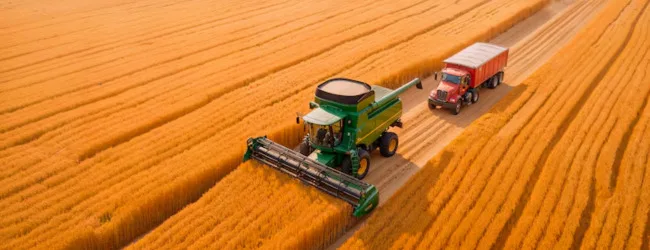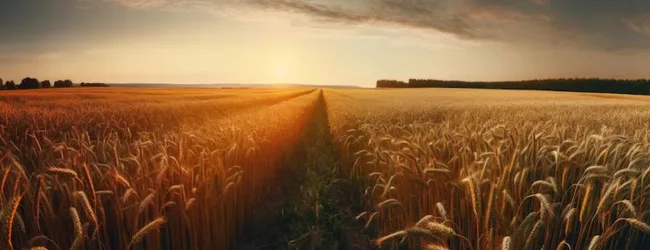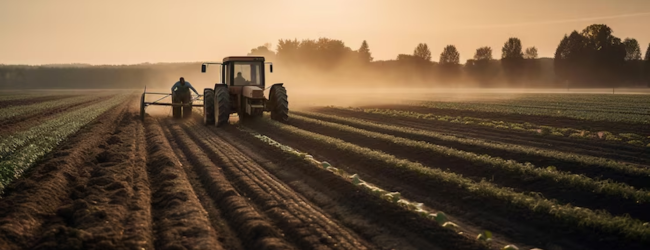Table of contents
- What is Monoculture Farming?
- Common Monoculture Practices in India
- Benefits of Monoculture Farming
- Challenges & Drawbacks of Monoculture
- Real-Life Example: Punjab’s Wheat-Rice Cycle
- Economic Aspects of Monoculture
- Alternatives to Monoculture Farming
- Where is Monoculture Farming Practiced in India?
- Why Do Farmers Still Prefer Monoculture?
- Conclusion
- Frequently Asked Questions (FAQs)
Monoculture farming, the practice of growing a single crop over a vast area, is prevalent in India due to its simplicity and potential for high yields. While it offers certain advantages, it also poses significant challenges to soil health, biodiversity, and long-term sustainability. This article delves into the nuances of monoculture farming, especially within the Indian context, providing insights into its practices, benefits, challenges, and alternatives..
What is Monoculture Farming?

Monoculture farming means planting only one kind of crop (like rice, wheat, or cotton) on the same piece of land for many years. Unlike mixed or multi-cropping, monoculture focuses only on one crop throughout the season.
Why Farmers Choose Monoculture:
- It’s easy to manage—you need only one set of tools and inputs.
- It can produce more in less time if the demand for that crop is high.
- It is favoured by large-scale commercial farms and government procurement systems.
Common Monoculture Practices in India
In India, several crops are widely grown as monocultures due to high demand and government incentives.
| Crop | Major States Practicing | Season |
|---|---|---|
| Wheat | Punjab, Haryana | Rabi (Winter) |
| Rice | West Bengal, Tamil Nadu | Kharif (Monsoon) |
| Cotton | Maharashtra, Gujarat | Kharif |
| Sugarcane | Uttar Pradesh, Maharashtra | Year-round |
💡 Pro Tip: If you want to start a Business but have too many doubts, connect with a Business expert from Boss Wallah for guidance – Check Out
Benefits of Monoculture Farming

Monoculture farming offers several advantages, especially in short-term productivity and ease of operations:
- High efficiency: Easy to manage and mechanise.
- Less labour required: One crop means fewer management decisions.
- Bulk production: Perfect for mass supply to industries and export.
- Government support: Crops like rice and wheat receive the Minimum Support Price (MSP).
Challenges & Drawbacks of Monoculture
While monoculture may seem beneficial, it poses major challenges for long-term farming success.
1. Soil Health Depletion
Growing the same crop year after year removes the same nutrients from the soil, leading to reduced fertility.
2. Increased Pest and Disease Risk
A lack of crop diversity creates a breeding ground for pests, requiring more pesticide use.
3. Environmental Harm
Excessive chemical use pollutes soil and water, harming nearby ecosystems.
4. Water Usage
Some monoculture crops like sugarcane and rice consume a lot of water, leading to groundwater depletion.
Real-Life Example: Punjab’s Wheat-Rice Cycle
In Punjab, farmers have been growing wheat and rice in rotation for decades. Although it helped ensure food security, the side effects have been serious:
- Groundwater levels dropped to dangerous levels.
- Soil quality degraded due to chemical overuse.
- Farmers now face rising input costs and reduced yields.
Economic Aspects of Monoculture
Monoculture farming can bring profit, especially when crops are sold in bulk or processed. But over-reliance on one crop can be risky.
How Farmers Earn:
- Crop sale: Selling to mandi or food processing companies.
- By-product sale: Cotton seed, rice husk, wheat straw, etc.
- Subsidies & MSP: Helps cover cost, but not always profitable long-term.
*Prices as per recent government data.
ALSO READ | Vegetable Farming: How to Start, Effectiive Techniques, Profit & More
Alternatives to Monoculture Farming

To reduce the risks of monoculture, farmers are now exploring better practices like:
1. Crop Rotation
Changing crops each season helps restore soil nutrients and breaks pest cycles.
2. Intercropping
Growing two or more crops together (e.g., maize + pulses) to increase yield and reduce pest impact.
Using natural inputs to preserve soil fertility and health.
Combining crops with livestock, poultry, or fish farming to diversify income and improve sustainability.
Where is Monoculture Farming Practiced in India?
These states adopted monoculture mainly due to irrigation availability, government pricing support, and market access.
ALSO READ | Mulching Farming Techniques: Choosing the Right Mulch for Your Crops
Why Do Farmers Still Prefer Monoculture?

Even with its drawbacks, many Indian farmers continue monoculture farming because:
- It’s backed by government procurement (like wheat & rice in FCI).
- There is easy availability of seeds, fertilisers, and pesticides.
- It’s less risky in the short term when the crop has assured buyers.
Need Expert Guidance?
Starting a business can be challenging, but you don’t have to do it alone! At Boss Wallah, our 2,000+ business experts are ready to provide valuable insights and guidance. Whether you need help with marketing, finance, sourcing, or any other area of any business, our business experts are here to help you succeed
Confused about Which Business to Start?
Want to start your own business but unsure which one to choose? Explore Boss Wallah, where you’ll find 500+ courses by successful business owners, featuring practical, step-by-step guides on starting and growing various businesses.
Find your perfect business idea today
Conclusion
Monoculture farming may offer short-term gains, but it brings long-term challenges to soil, environment, and farmer incomes. As climate change and water scarcity rise, India must promote more sustainable practices like crop rotation and integrated farming. Policymakers, agri-businesses, and farmers need to collaborate to build a more balanced and resilient agriculture system.
Frequently Asked Questions (FAQs)
1. What is monoculture farming?
It is the practice of growing one type of crop in a specific area continuously over time.
2. Is monoculture farming good or bad?
It has short-term benefits but long-term environmental and economic risks.
3. Which crops are commonly grown in monoculture in India?
Rice, wheat, cotton, sugarcane, and tobacco.
4. Why is monoculture harmful to the environment?
It depletes soil nutrients, increases pest risk, and leads to chemical pollution.
5. How does monoculture affect soil?
It causes loss of nutrients and reduces soil fertility over time.
6. Can monoculture lead to pest outbreaks?
Yes, because pests can easily multiply when only one crop is grown.
7. What is an alternative to monoculture?
Crop rotation, intercropping, and integrated farming.
8. Why do farmers in Punjab follow monoculture?
Because of government procurement support for wheat and rice.
9. Can monoculture be profitable?
Yes, but only if supported by market demand and subsidies.
10. How can monoculture farming be made sustainable?
By adding crop diversity, using organic methods, and reducing chemical input.


